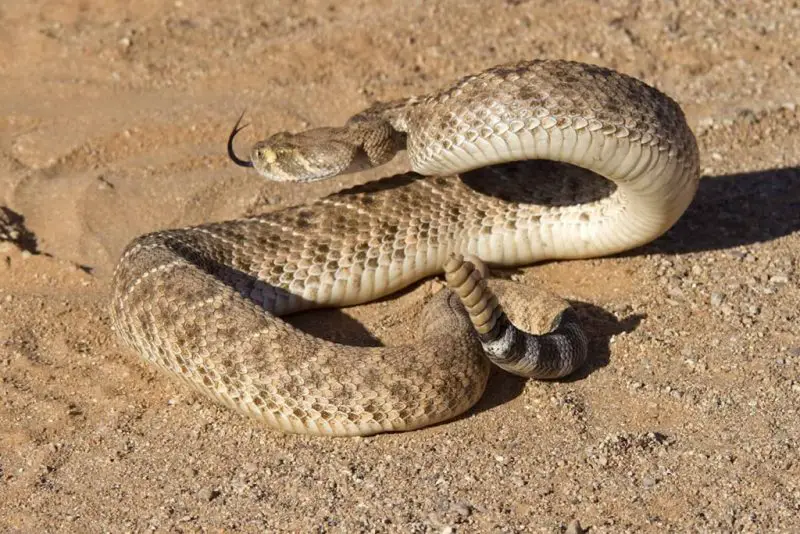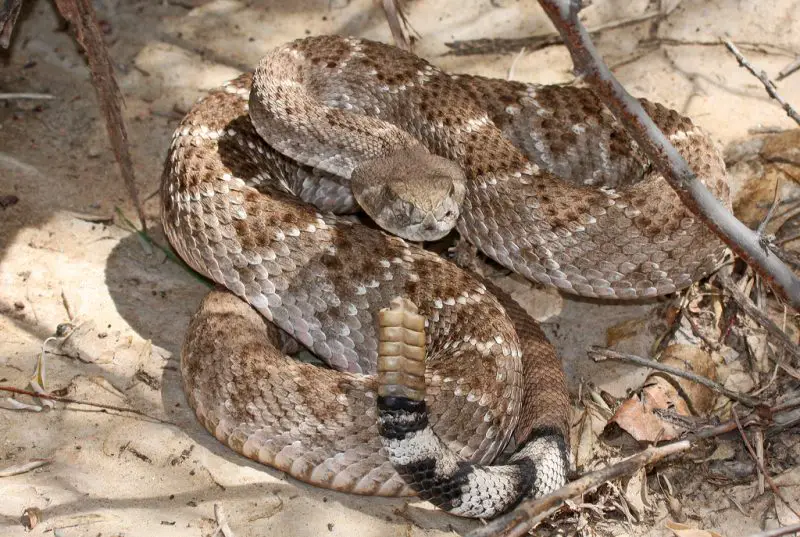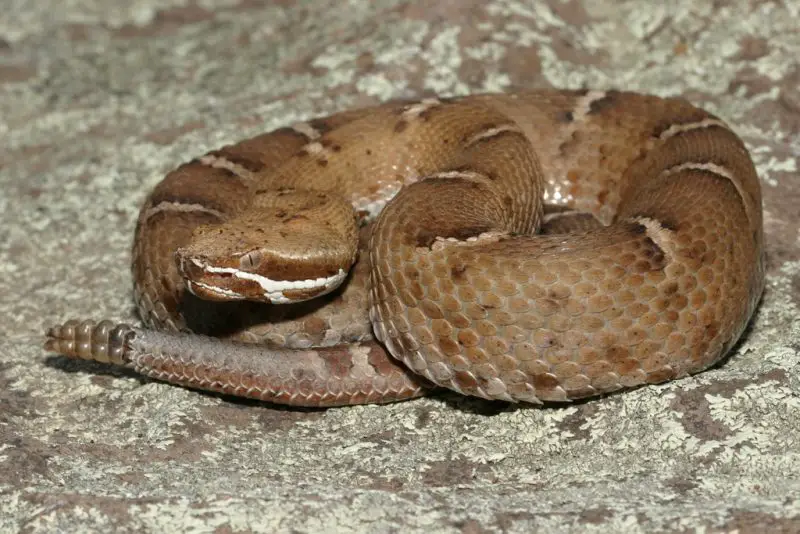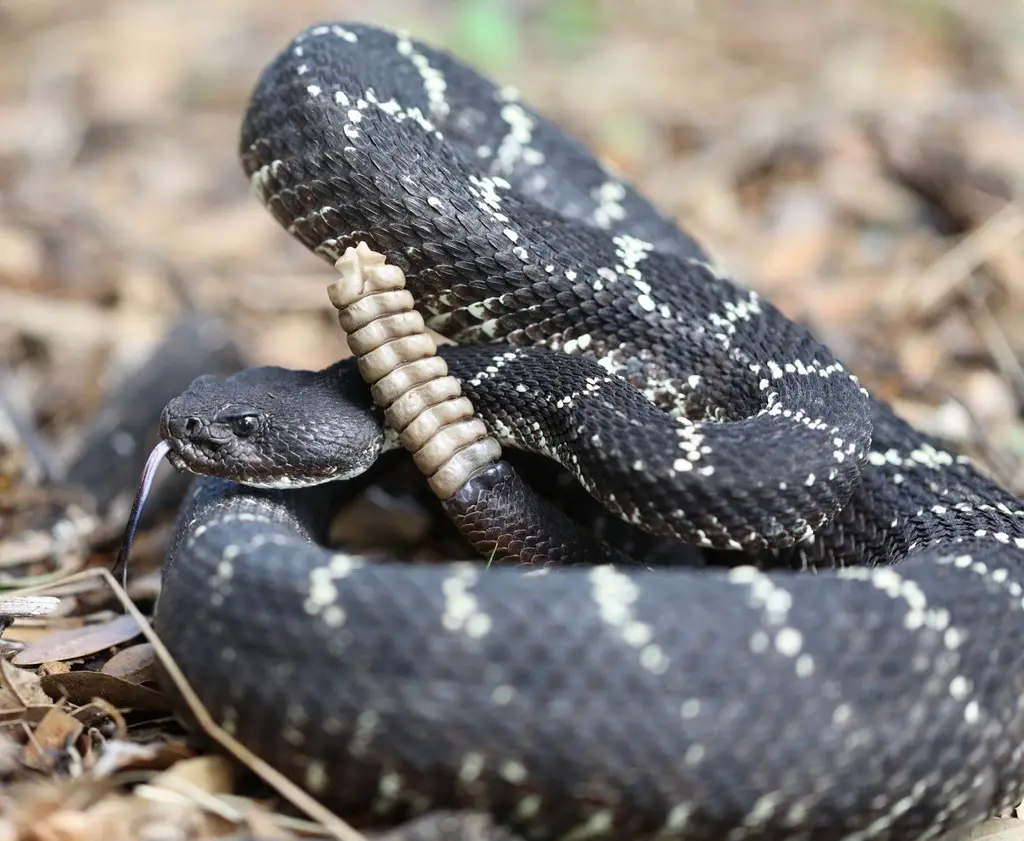Arizona’s deserts and mountains are alive with fascinating wildlife, but few creatures inspire as much fear—and curiosity—as the rattlesnake. These stealthy reptiles have lived in the region for millions of years, perfectly adapted to some of the harshest environments on Earth. Yet, despite their fame, most people know very little about their hidden lives.
This article uncovers the secret world of Arizona’s rattlesnakes, exploring their behaviors, adaptations, and why understanding them is essential for safety and conservation.
Why Arizona Is a Rattlesnake Hotspot

Diversity of Species
Arizona is home to more rattlesnake species than any other U.S. state—at least 15 distinct types call this region home. From the famous Western Diamondback to the elusive Ridge-nosed Rattlesnake, Arizona’s terrain supports an astonishing variety of habitats. Each species has carved out its ecological niche—some thrive in the scorching desert, while others inhabit the cooler, forested mountain slopes.
This diversity allows rattlesnakes to occupy nearly every corner of the state, from the arid Sonoran Desert to the pine-covered Mogollon Rim and the highlands near Flagstaff. Such adaptability makes Arizona a global stronghold for these venomous reptiles.
Geography and Climate
Arizona’s mix of deserts, canyons, and mountain ranges creates a mosaic of microclimates perfect for rattlesnakes. These reptiles are ectothermic—meaning they rely on external heat sources to regulate body temperature. The state’s sunny climate allows them to bask for warmth, while abundant rocky crevices and burrows provide cool retreats during the hottest hours.
During monsoon season, rattlesnakes become especially active. The increased humidity and rain draw prey out of hiding, and snakes can be seen moving toward water sources or shaded terrain. This seasonal rhythm defines much of their behavior and movement across the landscape.
Ecological Role
Rattlesnakes are far more than desert predators—they are vital ecosystem regulators. By feeding on rodents such as mice, rats, and gophers, they help prevent overgrazing and control diseases spread by these animals. In doing so, rattlesnakes maintain the delicate balance of Arizona’s ecosystems. Without them, rodent populations would surge, affecting vegetation and even human agriculture. Despite their misunderstood reputation, they are among the most important members of the desert food web.
Unusual Behaviors You Probably Didn’t Know
Rain Harvesting and Water Survival
In the desert, water is life—and rattlesnakes have evolved a truly remarkable adaptation. Their scales feature microscopic grooves that collect and channel raindrops toward their mouths. When a desert rainstorm hits, a rattlesnake will coil tightly, letting the water trickle down its body until it can drink. This “rain-harvesting” mechanism allows them to hydrate during brief desert showers and survive long, dry periods that would kill less-adapted creatures.
Seasonal Patterns and Denning
Rattlesnakes’ daily and yearly activity patterns are finely tuned to Arizona’s climate. In the blistering summer heat, they become nocturnal or crepuscular—active only in the cooler hours around dawn and dusk. From March through October, they roam in search of food or mates. Come winter, they enter a state of dormancy, retreating into communal dens—sometimes with dozens of other snakes—to conserve warmth. These dens, often reused year after year, can be located in rock crevices, abandoned animal burrows, or beneath root systems.
Camouflage and Color Change
Many Arizona rattlesnakes are masters of camouflage. Their coloration often mirrors their environment—reds and browns in the desert, greens and grays in forested regions. Some, like the Arizona Black Rattlesnake, even have the ability to lighten or darken their skin tone in response to temperature or background. This color-shifting not only improves camouflage but also aids in thermoregulation. A darker color absorbs heat more efficiently, while a lighter one helps reflect it, providing perfect adaptability for fluctuating desert conditions.
Myths vs. Reality
Myth: Rattlesnakes Are Aggressive
Reality: Rattlesnakes are defensive, not aggressive. They strike only when threatened or cornered. Their iconic rattle is not a prelude to attack but a clear warning for potential predators—including humans—to back away. Most snake bites happen when people attempt to handle, provoke, or kill them.
Myth: Rattlesnakes Only Live in the Desert
Reality: While many species inhabit desert areas, rattlesnakes are found in mountains, forests, grasslands, and canyons. For instance, the Arizona Ridge-nosed Rattlesnake thrives in the cooler pine-oak forests of the “sky island” mountains in southeastern Arizona—far from the sandy desert stereotype.
Myth: Rattlesnake Season Is Just Summer
Reality: Their active season spans early spring to late fall. While they are more visible in summer, mild winters in Arizona can still bring sightings of basking snakes on sunny days. Their behavior simply shifts toward nocturnal patterns as temperatures rise.
Hidden Survival Strategies
Heat Sensing
Rattlesnakes belong to the viper family, specifically pit vipers, known for the heat-sensing pits located between their eyes and nostrils. These organs detect infrared radiation from warm-blooded prey, allowing rattlesnakes to strike with astonishing precision even in complete darkness. This ability gives them a massive hunting advantage in the cool desert night.
Venom and Diet
Juvenile rattlesnakes start with a diet rich in small reptiles and insects, while adults focus on mammals like rabbits and rodents. Interestingly, the composition of their venom changes with age—a biological adjustment to better target their typical prey. This dynamic venom evolution highlights how finely tuned these snakes are to their environment.
Social Behavior
Contrary to their solitary reputation, some Arizona rattlesnakes exhibit surprising social behaviors. Female Arizona Black Rattlesnakes have been observed guarding their young for several days after birth, offering rare maternal care among reptiles. Some even form small groups in dens, suggesting a level of social structure that challenges long-held assumptions about snake behavior.
Coexisting with Rattlesnakes
Safety on the Trail
Encounters are inevitable in snake country, but danger is easily avoided with awareness. When hiking, stay on clear trails, wear sturdy boots, and avoid stepping over logs or into brush where visibility is low. Use a flashlight during night hikes, and always listen for the distinct buzz of a rattler’s warning. Most snakes prefer to flee rather than fight—give them the space to do so.
Around Your Home
As Arizona’s cities grow, rattlesnakes increasingly wander into suburban areas. They are attracted by rodent prey and shelter opportunities. Homeowners can minimize encounters by keeping yards clean, removing piles of wood or debris, and sealing cracks under fences and walls. In one notable case, a Mesa resident found 20 rattlesnakes sheltering in a cluttered garage—an unforgettable reminder of why prevention matters.
Conservation and Respect
Rattlesnakes play a crucial role in nature’s balance and deserve respect, not eradication. Killing them disrupts local ecosystems and often leads to increased rodent problems. If you encounter one near your home, contact a licensed wildlife removal service. Many Arizona organizations, such as Phoenix Herpetological Sanctuary and Rattlesnake Solutions, specialize in safely relocating snakes while educating the public on peaceful coexistence.
Arizona’s Most Fascinating Rattlesnake Species
The Western Diamondback Rattlesnake (Crotalus atrox)

The Western Diamondback is the most recognizable and widespread rattlesnake in Arizona. Its bold diamond-shaped patterns and powerful rattle make it an icon of the American Southwest. Preferring deserts, grasslands, and scrublands, it’s adaptable enough to survive near urban areas. Despite its intimidating reputation, this snake prefers retreat over confrontation.
The Arizona Ridge-Nosed Rattlesnake (Crotalus willardi)

As Arizona’s state reptile, the Ridge-nosed Rattlesnake stands out for its beauty and rarity. Small and secretive, it inhabits high-altitude forests in southeastern Arizona. Its coppery coloration and distinctive white facial stripes make it one of the most photogenic rattlesnakes in North America. Because of its limited range, it’s rarely seen except by herpetologists and dedicated hikers.
The Arizona Black Rattlesnake (Crotalus cerberus)

Found in central and northern Arizona, this species is known for its color-changing ability and social tendencies. Adults often appear dark brown or black, while juveniles show brighter, banded patterns that fade over time. They inhabit pine forests and rocky canyons, demonstrating incredible versatility in both climate and behavior.
The Future of Rattlesnakes in Arizona
Climate Change Effects
Rising temperatures, extended droughts, and shifting rainfall patterns are already impacting rattlesnake populations. Snakes may emerge earlier in spring, alter their feeding patterns, or move into new elevations seeking favorable habitats. Their rain-harvesting adaptation will likely become even more vital as Arizona faces drier years ahead.
Human Encroachment
Urban expansion continues to reduce and fragment rattlesnake habitats. As people build homes deeper into desert and foothill regions, encounters increase. Education is key—programs across the state now teach residents how to identify, avoid, and safely respond to rattlesnakes without resorting to killing them.
Research and Conservation Efforts
Ongoing research is revealing new insights into rattlesnake venom evolution, genetic diversity, and migration patterns. Scientists use GPS tracking to study movement, while citizen science apps allow residents to report sightings that help map population changes. These efforts are essential for shaping future conservation strategies.
Quick Safety Tips for Rattlesnake Encounters
- Stay calm—most snakes prefer escape over confrontation.
- Back away slowly; do not make sudden movements.
- Never attempt to handle, corner, or provoke a rattlesnake.
- If bitten, seek immediate medical help; avoid home remedies like ice, cutting, or tourniquets.
- When hiking in snake-prone areas, wear closed-toe shoes and carry a flashlight at night.
Key Takeaways
- Arizona hosts more rattlesnake species than any other U.S. state.
- These snakes show extraordinary adaptations, including color change, rain-harvesting, and heat sensing.
- Many common myths about rattlesnakes are false—they are not inherently aggressive.
- Rattlesnakes play critical ecological roles by controlling rodent populations.
- Education, awareness, and respect foster peaceful coexistence between humans and snakes.
Final Thoughts
Rattlesnakes in Arizona are both feared and fascinating. They embody resilience and intelligence, having thrived for millions of years in one of the world’s harshest environments. From rain-harvesting to infrared hunting, their survival tactics reveal nature’s ingenuity. Understanding them helps replace fear with respect and appreciation for the delicate ecosystems that sustain life in the desert.
So, the next time you’re hiking through Arizona and hear that unmistakable rattle, pause—not in panic, but in awe. That sound is more than a warning; it’s a whisper from the ancient desert, reminding us that even the most feared creatures play an essential role in keeping nature in balance.
FAQs About Rattlesnakes in Arizona
What Time of Year Are Rattlesnakes Most Active in Arizona?
Rattlesnakes in Arizona are most active from March through October, with activity peaking in the warm months of April to September. During these periods, temperatures allow snakes to hunt and mate efficiently. In the hottest months, they become more nocturnal, moving at dusk or dawn to avoid the midday heat. Even during mild winters, it’s not uncommon to see one basking on a warm afternoon, especially in southern Arizona.
How Dangerous Are Rattlesnakes to Humans?
While rattlesnake bites can be medically serious, they are rarely fatal thanks to modern antivenom and medical care. Most bites occur when people accidentally step on or try to handle a snake. Rattlesnakes are naturally defensive and prefer to avoid confrontation. Listening for their rattle and keeping a safe distance—at least six feet away—is usually enough to stay safe. In Arizona, hundreds of bites occur yearly, but fatalities are extremely rare.
What Should You Do If You’re Bitten by a Rattlesnake?
If bitten, stay calm and call 911 immediately. Keep the affected limb immobilized and below heart level, and remove tight clothing or jewelry before swelling occurs. Do not apply a tourniquet, cut the wound, or try to suck out venom—these methods can cause more harm. Get to a hospital as quickly as possible, where antivenom treatment can be administered. Most people recover fully with prompt medical care.
How Can You Keep Rattlesnakes Away from Your Property?
The best prevention methods involve removing anything that attracts snakes or their prey. Keep your yard free of debris, tall grass, and woodpiles, which provide hiding spots. Seal gaps in fences, garage doors, and walls. Avoid leaving pet food outside, as it draws rodents—rattlesnakes’ favorite prey. Installing snake-proof fencing or using mesh barriers around vulnerable areas can also be effective in high-risk zones.
Do Rattlesnakes Play a Role in the Environment?
Yes—rattlesnakes are essential to Arizona’s ecosystems. They help control rodent populations, which prevents overgrazing and reduces the spread of diseases like hantavirus and plague. They also serve as prey for hawks, eagles, and coyotes, maintaining a balanced food web. Removing them from the environment can lead to a chain reaction of ecological imbalance, affecting plant growth and even agricultural yields.
Are Rattlesnakes Protected in Arizona?
Some species, such as the Arizona Ridge-nosed Rattlesnake, are protected under state law due to their limited range and declining populations. It’s illegal to collect or kill these snakes without proper permits. In general, rattlesnakes are considered nongame wildlife, meaning they can’t be taken or harmed indiscriminately. Conservation efforts across Arizona promote education and nonlethal relocation instead of extermination.
How Do Rattlesnakes Communicate?
Rattlesnakes communicate primarily through vibrations and body language. The famous rattle serves as an audible warning to predators and humans, signaling that they feel threatened. They may also use body posture—coiling tightly and raising their heads—as a defensive display. Chemical cues in their environment help them track prey and potential mates, showing that rattlesnakes are far more perceptive than most people realize.
Do Baby Rattlesnakes Have Rattles?
Newborn rattlesnakes are born with a “button” on their tails but no fully formed rattle. Each time the snake sheds its skin, a new segment—called a rattle segment—is added. These hollow interlocking sections create the rattling sound when vibrated rapidly. Contrary to myth, you can’t determine a snake’s age by counting the rattles since old ones can break off over time.
Are Rattlesnakes Found in Urban Areas?
Yes, especially as urban development expands into natural habitats. Cities like Phoenix, Tucson, and Mesa often experience rattlesnake sightings in yards, golf courses, or hiking trails bordering wild areas. During mating or hunting seasons, they may wander into garages or patios in search of shelter or prey. Always use caution when moving outdoor furniture, gardening, or walking pets near desert landscapes.
How Can You Identify a Rattlesnake?
Rattlesnakes are typically recognized by their triangular heads, vertical slit pupils, and of course, the rattle at the end of their tails. Their bodies are thick and muscular, with distinct patterns varying by species—such as diamonds, bands, or blotches. However, not all rattlesnakes rattle before striking, especially if they’re young or feel cornered. The safest approach is to assume any coiled, patterned snake with a broad head is venomous and give it space.






